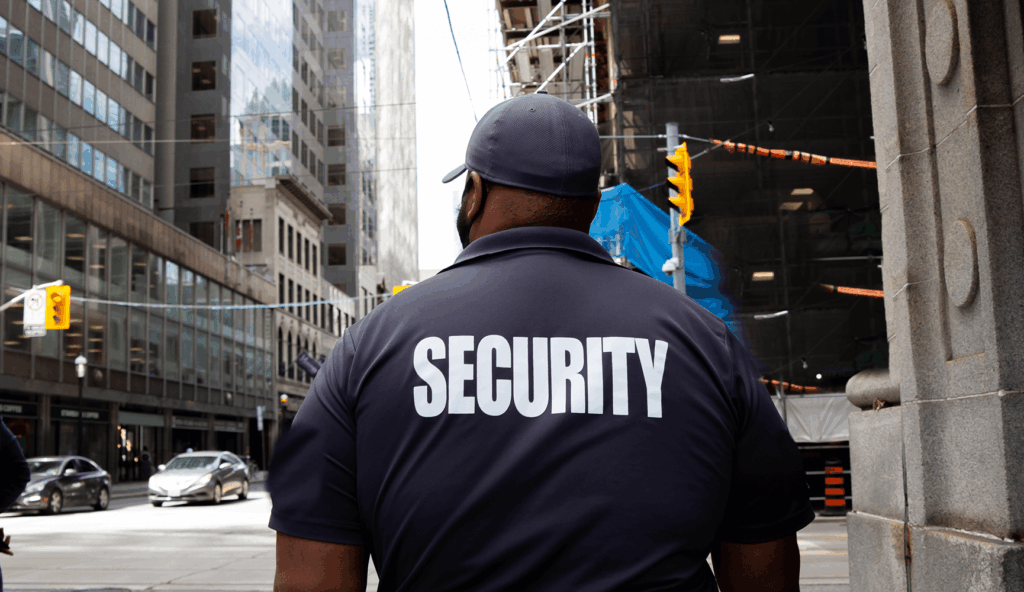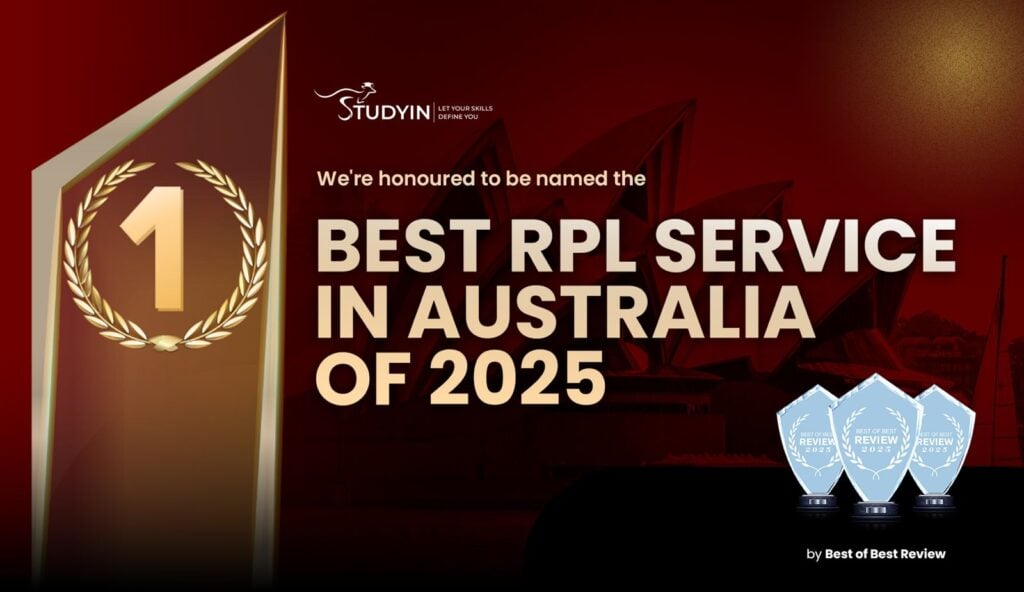A Private Security Licence is essential if you want to work in various security roles across Australia. Whether you’re interested in becoming a security officer, bodyguard, crowd controller, or any other security-related position, you need to hold a security licence. Each state and territory in Australia has its own set of licensing requirements, so it’s crucial to know the specific steps for the region you’re applying in.
But before you can apply for your Private Security Licence, you must first complete the Certificate II in Security Operations, an essential step in meeting industry standards and ensuring you’re fully prepared for the responsibilities of your role.
Certificate II in Security Operations (CPP20218) equips security officers with the necessary skills to manage safety and security tasks. This includes unarmed property protection, patrolling, crowd control, and other essential tasks such as entry screening, behaviour monitoring, and handling individuals on the premises. It ensures that you meet the licensing standards required for roles like an unarmed security guard or crowd controller, making it a must-have certification for anyone entering the security industry in Australia.
Why Certificate II in Security Operations is Essential
Before applying for your Private Security Licence, completing Certificate II in Security Operations is a mandatory requirement. This certification not only prepares you to perform essential security tasks but also ensures compliance with the occupational licensing standards set by the authorities. It covers a wide range of areas such as:
- Patrolling and guarding property
- Managing crowd control
- Monitoring behaviors and handling individuals
- Ensuring overall safety in various environments
By completing this certification, you’ll be ready to apply for your licence, equipped with the knowledge and skills required to perform your duties competently and professionally.
State-by-State Guide to Applying for Your Private Security Licence
Each state and territory in Australia has its own process and requirements for applying for a Private Security Licence. Here’s a breakdown of what you need to know for each area:
Victoria (VIC)
Individual Licence Types: Private security authority types are separated into Licence (Class A) and Registration (Class B) type activities.
- Class A Activities include Investigator, Bodyguard, Crowd controller,
Private security trainer or Security guard (including sub-activities) - Class B Activities include Security equipment installer (CCTV, Security Cameras, Security alarms, safes, vaults, etc.) and security adviser – a person employed to provide advice about security equipment, security methods, or principles.
How to submit your application?
- Access the Victoria Police Licensing eServices Portal and fill out your application.
- When you submit your application, you will be prompted to print it and send it to the Licensing and Regulation Division along with your supporting documentation via the post.
- During this time, you will receive a notification in the mail to organise your fee payments, have your photograph taken at an approved VicRoads photo point, and have your fingerprints taken (if applicable). Note: This does not mean your application has been approved. If your application is refused, you will receive a refund.
- Upon receipt of your application, the Licensing and Regulation Division will process your application and if approved, will provide you with your plastic license in the mail.
- Regulator: Licensing and Regulation Division (VIC Police)
New South Wales (NSW)
Individual Licence Types: If you’re planning to work in the security industry in NSW, you must hold the appropriate Class 1 or Class 2 security operative license. You can hold more than one class or subclass on a single licence.
- Class 1 licenses: 1C Cash-in-Transit Guard, 1D Guard Dog Handler, 1E Monitoring Centre Operator, 1F Armed Guard.
- Class 2 licenses: 2A Security Consultant, 2B Security Seller, 2C Security Equipment Specialist, 2D Security Trainer, 2E Private Investigator
How to submit your application?
- Check the eligibility requirements at the Security Licensing & Enforcement Directorate website.
- Gather the required digital and scanned documentation.
- Select the ‘Apply online’ button.
- Log in, or create your MyServiceNSW Account.
- Follow the prompts to apply for your security operative licence.
- Once you’ve submitted your application, you’ll receive an email confirmation and payment receipt. You’ll also receive a letter if you need to attend a Service NSW Centre to have your photo taken for your new security licence card.
Queensland (QLD)
Individual Licence Types: If you’re planning to work in the security industry in Queensland, you must hold the appropriate Class 1 or Class 2 security operative licence.
- Class 1 licences: Bodyguard, private investigator, crowd controller, security officer (cash in transit, unarmed, monitoring, dog patrol).
- Class 2 licences: a security adviser or a security equipment installer.
How to submit your application?
- Identification: These documents must be either original (if lodged at the counter) or certified copies. Your identification must include at least one of the following five documents: Birth certificate or extract, Passport, ImmiCard, driver’s license, and photo identification card. You will need to pay the required fees when you lodge your application.
- Fingerprinting: By law, the police need to fingerprint all security providers. We will contact you after you lodge your application form to explain what you need to do.
- Criminal history check: To confirm your suitability, we will submit your application for a criminal history check. This will be thorough and may be time-consuming.
- Processing time: The processing time is four to six weeks. This can take longer if you have not supplied us with all the information we need or you have not paid the correct fees.
- Regulator: Office of Fair Trading
Western Australia (WA)
Individual Licence Types: If you’re planning to work in the security industry in Western Australia, you must hold the appropriate agent or non-agent licences.
- Agent Licences: Security Agent, Crowd Control Agent, Inquiry Agent.
- Non-Agent Licences: Security Officer, Security Officer – Control Room/Monitoring Centre, Security Bodyguard, Crowd Controller, Security Consultant, Security Installer, Investigator.
How to submit your application?
The following documents are required for all licence types:
- Proof of Age and Identity (Applicants must provide 100 points of identification)
- Two (2) Character References
- Four (4) passport-sized photos (Head and shoulders only on white or light background)
- Overseas Police Clearance (Required if not a resident of Australia for the last 5 years)
- Licence application forms can be found in Police Direct, and you must carefully complete all sections.
- Applicants within 50km of the Perth GPO must apply in person at Licensing Services Security
- Applicants more than 50km from the Perth GPO must apply in person at their local police station.
- Incomplete applications will not be accepted.
- Regulator: Licensing Services Security
Tasmania (TAS)
Individual Licence Types: If you’re planning to work in the security industry in Tasmania, you must hold the appropriate Security employee license.
- Licence activities: Crowd Control, Security Guarding General (Security Guard, Monitoring Room Operator, Bodyguard, Commercial Employee), Additional endorsements.
- Additional endorsements to be added to their licence: permitted to use a guard dog, permitted to carry a firearm, permitted to carry a baton, permitted to carry handcuffs.
How to submit your application?
- Read the information on this license page so you know what to do and what documents to provide.
- Read the Personal Information Protection Statement
- Prove your identity and have your photo taken at a Service Tasmania shop.
- Give consent and have your fingerprints checked at a Tasmania Police station
- Give consent to CBOS to request a National Criminal History check for the purposes of your security licence.
- Scan and save (computer or storage device like a USB) a digital copy of your documents
- Current visa or Australian Citizenship certificate, or Australian Passport if born overseas, showing you have work rights in Australia
- qualifications of full training requirements
- When you are completing your online application or renewal, you will need to answer a set of suitability questions.
- There is a penalty for supplying any false or misleading information
South Australia (SA)
Individual Licence Types: If you’re planning to work in the security industry in South Australia, you must hold a security agent’s licence.
- Services: crowd or venue control, installing and maintaining security systems, guarding property or people, security systems sales, and advice.
How to submit your application?
- Check that you have the right knowledge and experience to apply for a security or investigation agent licence.
- Complete Online Application for Security and Investigation Agents Licence.
- As part of the application process, South Australia Police will contact you to arrange fingerprinting. South Australia Police will contact you using the email address provided on your application.
- Security agents must complete a personal information declaration (PID)
- You can download your license or registration to an Apple or Android smartphone or tablet using the mySAGOV app.
- Your client ID can be found in the Consumer and Business Services license register.
- Regulator: Consumer and Business Services
Northern Territory (NT)
Individual Licence Types: If you’re planning to work in the security industry in the Northern Territory, you must hold a security agent’s license to:
- Work as a security officer or crowd controller
- Run a security firm
- Provide crowd control or private security services as a corporation or partnership.
How to submit your application?
- Before you apply, get a criminal history check for yourself
- Go to Licensing NT Online and fill in the application for a private security license.
- Get a police fingerprint check.
- Submit your application and pay the fee at your nearest Territory Business Centre.
- Regulator: Department of Industry, Tourism and Trade
Australian Capital Territory (ACT)
Individual Licence Types: If you’re planning to work in the security industry in the Australian Capital Territory, A security employee license authorises the licensee to do one or more of the following security activities under the relevant sub-class. The sub-classes and their identifiers are:
- patrol, guard, watch, or protect property (including cash in transit) (1A);
- act as a bodyguard (1B);
- act as a crowd controller (1C);
- guard with a dog (1D);
- act as a monitoring centre operator (1E);
- guard with a firearm for cash in transit (1FC);
- guard with a firearm for protecting property (1FP);
- act as a security consultant (2A);
- sell security equipment (2B);
- carry out surveys and inspections of security equipment (2C);
- give advice about security equipment (2D); and,
- install, maintain, monitor, repair, or service security equipment (2E).
How to submit your application?
- You may apply for a security licence by completing the relevant application form and paying the prescribed fee.
- All applications will be forwarded to the Licensing Team for processing, and if approved, your license will be posted to you. Please note that Access Canberra Service Centres cannot issue licenses while you wait.
- Applicants lodging by mail, email, or fax must attend one of the Service Centres listed above to have their photo and signature taken. A fingerprint-verified police certificate is only required once, at the time of your original application, or where one has not been provided previously to the Commissioner due to fingerprint services not being available. Thereafter, a name-only police certificate is required to renew your license.
- Regulator: Access Canberra
What to Avoid When Applying for Your Private Security Licence
To ensure a smooth application process, avoid the following common mistakes:
- Failure to Meet Age Requirements: Make sure you meet the age criteria for the security role you’re applying for.
- Criminal Convictions: Certain criminal convictions may disqualify you from obtaining a security licence. Check eligibility requirements in your area.
- False Information: Always provide accurate and truthful information on your application. Misleading details could lead to immediate disqualification.
- Lack of Required Training: Ensure you’ve completed the necessary training, such as Certificate II in Security Operations, before applying.
- Insufficient Documentation: Missing documents can delay your application or result in rejection. Double-check all requirements before submitting.
- Financial Issues: Some areas may review your financial history. Resolve any outstanding financial issues before applying.
- Drug or Alcohol Abuse: Past substance abuse may affect your application. Be prepared to demonstrate you’ve overcome any issues.
- Character References: Ensure your references are reputable and can provide an honest, positive assessment.
- Unlawful Activities: Stay clear of any unlawful activities or affiliations with criminal organisations, as they can seriously hinder your application.
Conclusion
Obtaining your Private Security Licence is an essential step for anyone looking to work in the security industry in Australia. Ensure you complete Certificate II in Security Operations to meet the necessary training requirements. With the right preparation and by following the guidelines provided by each state and territory, you’ll be on your way to a successful career in security.
At STUDYIN, we offer comprehensive guidance to help you complete your CPP20218 – Certificate II in Security Operations and navigate the process of applying for your Private Security Licence. Start your journey today!









